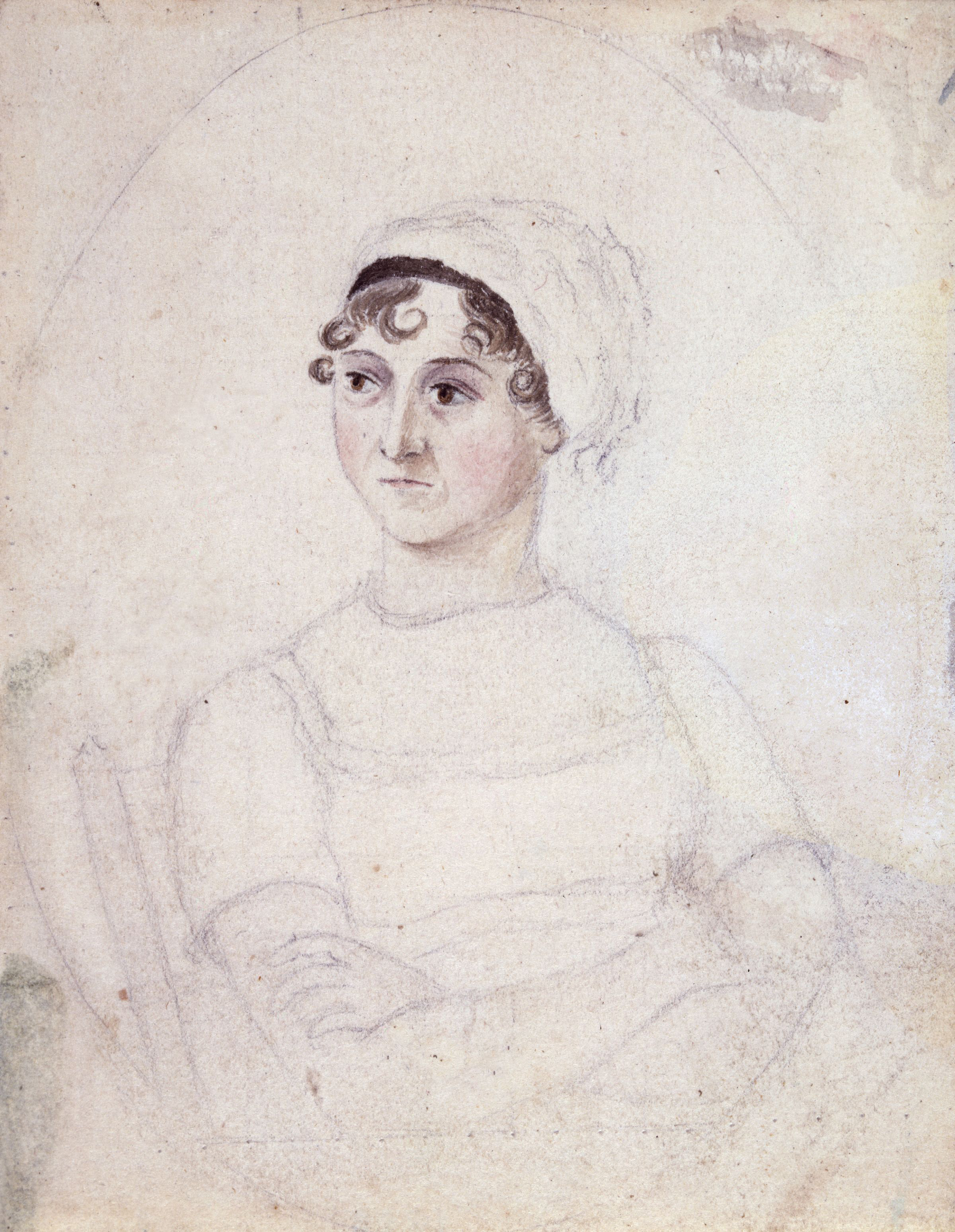Basildon Park is the site that in Pride and Prejudice serves as the location for Charles Bingley's rented home about three miles from the Bennets. This is the house where Elizabeth walks through the mud to get to see her sister. Basildon Park is near Reading and is an 18th-century mansion house that sits on around 400 acres of land that lead up the Thames River. (Molly Jordan)
EN 354R, Jane Austen, Skidmore College Dashboard
Description

Portrait of Jane Austen by Cassandra Austen, ca. 1810
It is a truth universally acknowledged that Jane Austen (1775-1817) is a keenly satiric writer whose work, deeply rooted in her time, resonates in ours. In this research-enriched course, we will read Austen’s six novels in their order of publication: Sense and Sensibility (1811), Pride and Prejudice (1813), Mansfield Park (1814), Emma (1816), Persuasion (1818), and Northanger Abbey (1818). Through virtual excursions and close reading, we will enter Regency ballrooms, country estates, and genteel parlors as we examine Austen’s voice as a writer and pressing issues that she actively critiqued, such as the economics of marriage, social class stratification, primogeniture, entailment, and slavery. To situate Austen in her historical moment, students will write four of six briefs (short papers on each Austen novel), a Regency life report (PowerPoint and oral presentation), and our IdeaLab project that will be displayed on the Collaborative Organization for Virtual Education (COVE). The course will culminate in a research paper on two or three Austen novels. Students should be prepared to read deeply, craft critically (for the IdeaLab component), participate actively, research deeply, and write analytically.
We will ground the novels of Jane Austen in her Regency world by practicing critical crafting and creating a gallery of our material objects on the Collaborative Organization for Virtual Education (COVE). Our two galleries will be on material objects of the Regency age--letter writing and silhouettes. Letters play a key role in most of Austen’s novels, but particularly in Pride and Prejudice and Persuasion. Using antique and reproduction pens from my personal collection and materials from the IdeaLab, students will use dip pens to write with ink, practice cross-writing (a cost saving measure where one turns a letter 90 degrees and writes over it), fold a letter (rather than use an envelope), and affix a wax seal. Like letters, portrait miniatures were popular Regency tokens of affection for Jane Austen’s family and her characters, who cherish, display, flaunt, and envy these items. Using materials in the IdeaLab, we will craft a portrait miniature/silhouette, which features prominently in Sense and Sensibility and Persuasion. To transform these tokens of affection into lasting mementos of our study of Jane Austen, we will turn to COVE. We will create two gallery exhibits—one on letter writing and another on portrait miniatures/silhouettes. Each student will design a virtual “case” for one of these two galleries.
Galleries, Timelines, and Maps
There is no content in this group.
Individual Entries
Bath plays a major and minor role in Austen's novels. She sets Volume I of Northanger Abbey (1818) in Bath and Volume II of Persuasion (1818) there. In Sense and Sensibility (1811), Bath is the place where Eliza (II) Williams is ruined and where, in Emma (1816), Mr. Elton finds his bride. CG
Bath plays a major and minor role across Austen's oeuvre. She sets the first volume of Northanger Abbey in Bath and the second volume of Persuasion in Bath. Bath has an appearance in Sense and Sensibility as the place of Eliza Williams's ruin and in Emma as the location where Mr. Elton finds his bride.
In Mansfield Park, Sir Thomas Bertram owns a plantation in Antigua and journeys there with his oldest son, Thomas, to help manage it. Austen thus brings repugnant slavery into this novel.
